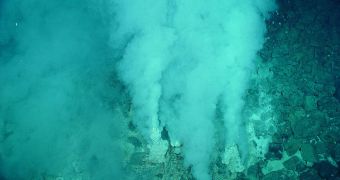The earliest forms of life that emerged on Earth may have appeared in an environment that was considerably hotter and more acidic than it is today. Studies of enzyme adaptations revealed this interesting fact in a recent research conducted at the Georgia Institute of Technology (Georgia Tech).
According to the new data, the first enzymes ever to develop changed significantly over time, in tune with the way Earth's global environment did. Temperatures and ocean acidity levels had a huge influence on the way these molecules look today.
Our planet is today dramatically cooler and less acidic than it was in its earliest days, some 4 billion years ago. Earth formed around 4.5 billion years ago, only millions of years after the Sun appeared.
The investigation was focused on thioredoxin, a class of ancient enzymes that researches established were stable at average temperatures of no less than 32 degrees Celsius (58 degrees Fahrenheit) above the level at which today's enzyme function perfectly.
Georgia Tech experts reveal that the 4-billion-year-old enzymes were also more active in a lower-pH environment. The lower you go on the pH scale, the more acidic the environment gets. Conversely, a pH of 15 indicates a highly-alkaline environment.
“This study shows that a group of ubiquitous proteins operated in a hot, acidic environment during early life, which supports the view that the environment progressively cooled and became more alkaline between four billion and 500 million years ago,” explains Eric Gaucher.
He is an associate professor at the Georgia Tech School of Biology, SpaceRef reports. Details of the new work were published in the April 3 advance online issue of the top journal Nature Structural & Molecular Biology.
Experts from the Columbia University and the Universidad de Granada, in Spain, were also involved in the work. NASA, the US National Institutes of Health (NIH) and the Spanish Ministry of Science and Innovation provided the bulk of the funding needed to complete the research.
“By resurrecting proteins, we are able to gather valuable information about the adaptation of extinct forms of life to climatic, ecological and physiological alterations that cannot be uncovered through fossil record examinations,” Gaucher explains.
The reconstruction of the ancient enzymes was made possible by a study method called ancestral sequence reconstruction, which enabled the scientists to recreate the structures of molecules belonging to all three major domains of life, eukaryote, bacteria, and archaea.
“Our results confirm that life has the remarkable ability to adapt to a wide range of historical environmental conditions; and by extension, life will undoubtedly adapt to future environmental changes, albeit at some cost to many species,” the Georgia Tech expert concludes.

 14 DAY TRIAL //
14 DAY TRIAL //